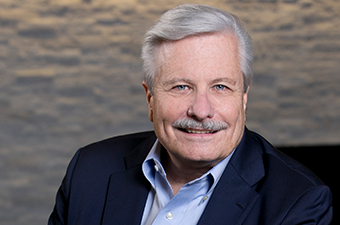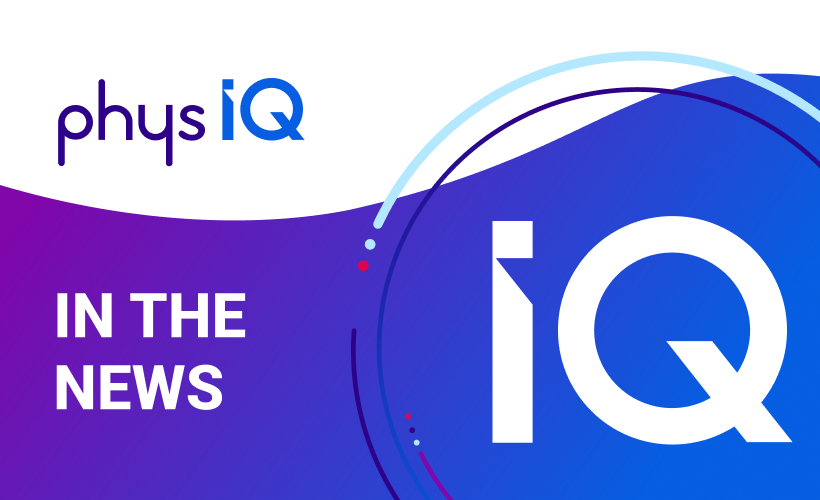Inside an Individual’s Physiological Signature
Originally published in Medical Device & Technology

Originally published in Innovate: Innovations of the World
A visionary serial entrepreneur, physIQ co-founder, Chairman and CEO Gary Conkright has a passion for taking game-changing technology from the laboratory to the commercial marketplace to solve important problems. A University of Chicago MBA and Purdue Aeronautical Engineer, Gary previously served as the founding CEO and Chairman of SmartSignal (acquired by GE Intelligent Platforms) to commercialize AI-based predictive analytics to monitor mission-critical industrial equipment. After discovering firsthand how much it was easier for an aircraft technician to remotely monitor a 747 than it was for his mother’s physician to monitor her chronic illness, Gary made it a personal mission to apply predictive analytics technology to healthcare.
Separating the Life-Saving Signal from the Noise
An early mentor of mine imparted three deceptively simple leadership tenets that I find valuable to keep in mind and on occasion pay it forward. 1) Build a smart team—surround yourself with the best talent; 2) Empower your team by providing an environment that embraces innovation and allows them to do their best work, and sometimes fail; and, 3) get the hell out of their way.
People often view startups as energizing and exciting places to be. There’s some truth to that perception. The mystique of entrepreneurship excites the human spirit, but that inspiration is not sufficient to maintain the ongoing growth and challenges of a startup. Bringing a disruptive innovation to market takes a high level of energy, hard work, grit and determination. Throughout my career leading startups, I have held a belief that success requires a steadfast focus on leveraging the company’s core competency and partnering with others to tap their capabilities needed for the startup’s success. Our core competency is “separating the signal from the noise” from biosensor data to provide early and actionable insights to advance human health.
A Personal and Passionate Journey
People drive innovation—and innovation starts with a passionate determination to solve a problem. A family healthcare journey informed my decision to tackle the challenge of commercializing and getting innovative digital healthcare solutions into the hands of providers to improve patient care. For a number of years, my mother struggled with a chronic medical condition punctuated by exacerbations. On occasion, this resulted in hospitalizations, usually followed by several weeks or longer in a rehabilitation facility to rebuild strength and mobility.
The challenges she faced were not unlike those of millions of others living with chronic illness. Her struggles and helping her navigate challenges highlighted for me the need for innovative technology to help physicians monitor and detect problems in patients in their homes who cannot be cured and are at risk for serious or catastrophic health events. After a hospitalization, once stabilized, the patient is sent home to convalesce and manage their disease. However, a high percentage of those folks are still at a significant risk of another readmission into the hospital. We believe such readmissions can be prevented using the same technology we have deployed in the past on jet engines.
Putting the “Magic” into New Models of Care
Science fiction author Arthur Clarke once noted, “Any sufficiently advanced technology is indistinguishable from magic.” In the era predating streaming data, ubiquitous smart phones, and wearable m-IoT devices, the concept of artificial intelligence (AI) existed for most people only in the realm of science fiction. I have had the distinct privilege of helping to make the magic happen.
Our team at physIQ developed a scalable, cloud-based personalized physiology analytics platform to enable proactive care delivery models with applications in healthcare and clinical trials. That’s a longwinded way of saying the technology already exists to make healthcare better now. We commercialized an AI-driven digital solution able to help hospitals prevent hospitalizations, reduce length of stays in skilled nursing facilities, and improve the quality of life for patients and – by association – those of us who love them.
Although a first for the medical industry, this is the second time we commercialized the technology at the core of the physIQ solution. The first time was to monitor nuclear power plants, jet engines, high-speed railroads—applications with costly, complex mechanical parts subject to high vibration and harsh environmental conditions. Technology can bring about the greatest good in service to humanity. Healthcare models must change to become more sustainable, affordable and effective at preventing illness and treating people in need. Failure is not an option in mission-critical operations, so why should it be in healthcare? At physIQ, we are determined to make that happen!

Originally published in Medical Device & Technology

Originally published in Pixel Scientia Labs

Originally published in Crain's Chicago